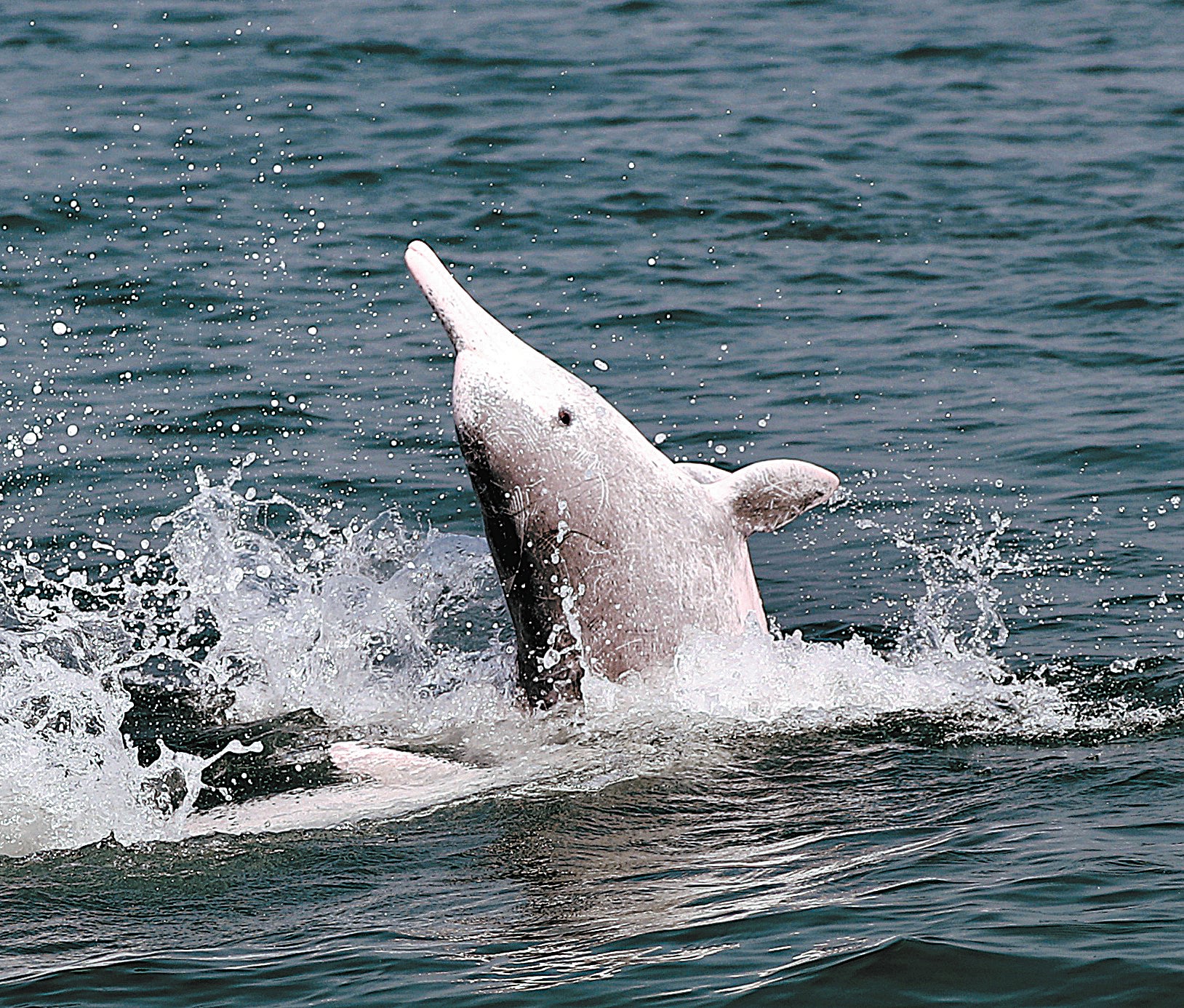In the swim for up to 10 million years
THE ARTICLES ON THESE PAGES ARE PRODUCED BY CHINA DAILY, WHICH TAKES SOLE RESPONSIBILITY FOR THE CONTENTS

Xie Xixian, 13, carefully picked sand off his slippers before placing it in a plastic bag and writing a label to record where the sample had been taken.
Nine-year-old Zhang Chenyun was just as eager to keep her sample of sand, telling her mother not to throw it away. Every few days she also asked when she could return to Guangxi Zhuang autonomous region to meet her “animal friends” again.
In July the pair and 16 other students from Beijing; Changsha, Hunan province; Zhuhai, Guangdong province; and Kunming, Yunnan province, travelled to Qinzhou in southern Guangxi to attend a special summer camp on biodiversity and life education.
Zhao Yi, a researcher at a biodiversity research centre in Sanniang Bay, said young people attending the camp followed a team of scientists and took part in scientific research and nature conservation.
Students benefit from new classrooms built by the beach and sea, with scientists as their teachers, and marine life, including Chinese white dolphins, as their teaching aids. This species, which is under first-class State protection in China, was included on the International Union for Conservation of Nature Red List of Threatened Species in 2008. It has long been considered equally important as the giant panda.
Chinese white dolphins have existed for about 10 million years. About eight million years ago some dolphins left what is now Australia, heading northwest towards the Sunda archipelago in Indonesia before continuing on to the South China Sea.
The marine mammals are unique to China, where their habitats are coastal areas off the Pearl River Delta, the Leizhou Peninsula in Guangdong, Xiamen harbour in Fujian province, and Taiwan.
Sanniang Bay has long been a home of the Chinese white dolphin, and the species has evolved over time.
On arrival, the students were quickly drawn to dolphin calves, whose skin changes colour as they mature. The calves are usually dark grey, while older dolphins are a lighter shade of grey, and adults an off-white. A dolphin’s skin turns pink in old age.
After attending sessions where they learned to observe and identify dolphins and venture out to sea safely, the students boarded powerboats, from which they sighted a group of white dolphins swimming and leaping close by.
Scientists pointed to the dolphins, indicating young ones and adults. The students kept records of the dolphins, and this data will be important for scientists studying the creatures’ life habits.
Holding life-education classes at sea for students is a relatively recent development. In June 2004, when there were fewer than 100 dolphins in the Sanniang Bay area, one was discovered with serious injuries.
Pan Wenshi, a professor and wildlife expert at Peking University, and local fishermen identified the young female, which was later named Qin Qin, after the city of Qinzhou.
The dolphin’s neck had become tightly tangled in a nylon rope that looked like a fishing net, and her skin was cut and torn. Despite blood flowing from her wounds, the dolphin had followed a fishing boat, attempting to eat fish in the vessel’s net.
Pan’s daughter, Pan Yue, also a scientist at the research centre, said: “She wanted to live. Even with such serious injuries, she still had a strong will to survive. It was at that moment that my dad decided to stay and protect her and other dolphins.”
The centre was established in Sanniang Bay in November 2004 by Pan Wenshi and his scientific research team from Peking University, with the aim of protecting Chinese white dolphins.
It also marked a starting point for scientists to find a balance between protecting biodiversity and promoting local economic development.
Previously published on Chinadaily.com.cn
Subscribe to Independent Premium to bookmark this article
Want to bookmark your favourite articles and stories to read or reference later? Start your Independent Premium subscription today.